Duncan Forbes, Lord Culloden
| Duncan Forbes of Culloden PC The Right Honourable[1] | |
|---|---|
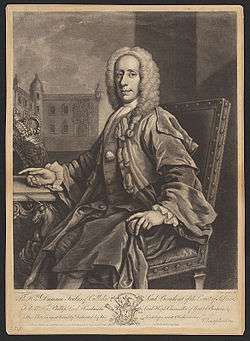 Duncan Forbes of Culloden | |
| Lord President of the Court of Session | |
|
In office 20 June 1737 – 4 June 1748 | |
| Monarch | George II |
| Preceded by | Hew Dalrymple, Lord North Berwick |
| Succeeded by | Robert Dundas of Arniston |
| Lord Advocate | |
|
In office 1725–1737 | |
| Preceded by | Robert Dundas of Arniston |
| Succeeded by | Charles Erskine |
| MP for Ayr Burghs | |
|
In office 1721–1722 | |
| MP for Inverness Burghs | |
|
In office 1722–1737 | |
| Personal details | |
| Born |
10 November 1685 Culloden House, nr Inverness Scotland |
| Died |
11 December 1747 (aged 62) Edinburgh |
| Resting place | Greyfriars Kirkyard |
| Political party | Whigs |
| Spouse(s) | Hon. Mary Rose (c.1690–1717?) |
| Children |
Elizabeth Forbes John Forbes (1710-1772) |
| Parents |
Duncan Forbes of Culloden Mary Innes |
Duncan Forbes of Culloden (10 November 1685 – 10 December 1747) was a Scottish politician and lawyer. As Lord President and senior Scottish legal officer, he played a major role in helping the government suppress the 1745 Jacobite Rising.
Life
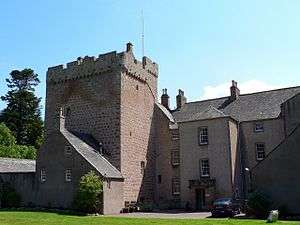
Duncan Forbes was born on 10 November 1685, in Culloden House, near Inverness, second son of Duncan Forbes and Mary Innes. His elder brother, John (1673-1734) was 12 years older but despite the age difference, the two were close friends all their lives. Duncan was educated first at the local grammar school before progressing to Marischal College, Aberdeen in 1699.[2].
John Forbes inherited Culloden when their father died in 1704; Duncan briefly attended Edinburgh in 1705, before completing his legal studies at Leyden University in the Netherlands.[3] He returned to Scotland in 1707 and in October 1708 married Mary Rose, whose family owned the nearby estate of Kilravock Castle. She apparently died before 1717; they had one surviving child, John Forbes (1710-1772) named after his elder brother, who died in 1734 without children and left him the family estates.
Career
The Forbes were closely associated with the Campbells and the Duke of Argyll; from 1713-1727, John Forbes was MP first for Inverness-shire and then Nairnshire, a constituency controlled by the Campbells.[4] Duncan's brother-in-law Hugh Rose (1684-1755) and his cousin George Forbes (1685-1765) were also associated with the Duke of Argyll; between 1741-1747, George was MP for Ayr Burghs, a seat Duncan held from 1721-1722.[5]

Under the 1707 Acts of Union combining Scotland and England in the Kingdom of Great Britain, Scotland retained its separate legal system, which led to a substantial amount of legal work. Forbes was admitted to the Faculty of Advocates on 26 July 1709 and Argyll's support led to an appointment as Sheriff of Midlothian.
During the Jacobite Rising of 1715, Argyll commanded government forces in Scotland; Duncan and his brother raised independent companies and fortified Culloden and Kilvarock. They joined forces with Simon Fraser, Lord Lovat and moved on Inverness, which surrendered to them just before the Jacobite defeat at the Battle of Sheriffmuir.
As a reward, in March 1716 Forbes was made Depute-Advocate. This required him to prosecute Jacobite prisoners being held in Carlisle, contrary to the accepted practice they be tried in the counties where the actions were alleged to have taken place. Forbes regarded this as unjust and apparently collected money for the support of Scottish prisoners in Carlisle. He is supposed to have written an anonymous letter to Sir Robert Walpole, recommending clemency for the rebels, exposing him to the suspicion of being pro-Jacobite.[6]
True or not, it did not affect his career; in 1721, he became MP for Ayr Burghs, a constituency controlled by the Argylls and in 1722 elected for Inverness Burghs, a seat he held until 1737.[7] Attending Parliament required frequent visits to London and he was frequently employed as counsel in appeals to the House of Lords.
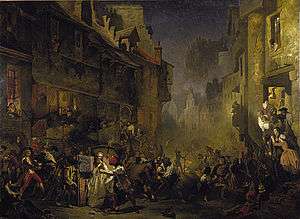
Forbes was appointed Lord Advocate in 1725, an office increased in importance by the suspension and later abolition of the position of Secretary of State. He was almost immediately involved in the 1725 malt tax riots which were caused by protests against a new tax that increased the price of beer.[lower-alpha 1] There were protests in many cities, the largest in Glasgow where rioters sacked the house of Daniel Campbell, MP for Glasgow or Clyde Burghs, who voted for it in Parliament.[8] Forbes ordered the arrest of several Glasgow magistrates suspected of inciting the unrest; they were soon released and the government made a number of concessions, although Daniel Campbell was awarded £6,080 in compensation.
Following the 1737 Porteous Riots in Edinburgh, a bill was introduced in Parliament imposing penalties on the city, which was opposed by the Duke of Argyll and Scots MPs in House of Commons, Forbes included.[lower-alpha 2] His speeches of 16 May and 9 June on this were to be his last in Parliament; on 21 June, he resigned as an MP and took up the position of Lord President of the Court of Session, becoming the senior legal officer in Scotland.
Role during the 1745 Rebellion
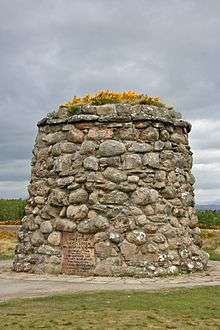
After the 1719 Rising, the government accepted that the Highlands could not be governed without the co-operation of the clan chiefs.[9] Attempts to punish Jacobites by confiscating and selling their property ended with the government losing money due to legal arguments or because the proceeds were reduced by fictitious debts, often aided by their loyalist friends.[10] I was easier to pardon them while the process also created links of obligations and friendship between those convicted of Jacobite activity in 1715 and 1719 and those who backed the government. This was the background to the bitterness displayed after the failure of the 1745 Rebellion towards those like Lord George Murray previously pardoned for their roles in 1715 and 1719.
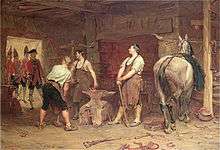
By 1737, the exiled Stuart claimant James Francis Edward was reported to be 'living tranquilly in Rome, having abandoned all hope of a restoration.'[11] However, events like the 1725 malt tax protests and the Porteous riots of 1737 showed a lack of sensitivity by the London government. This was exacerbated in March 1743 when the Highland-recruited 42nd Regiment or Black Watch was posted to Flanders to join British forces fighting in the War of the Austrian Succession. Forbes warned this was contrary to an understanding their service was restricted to Scotland but the move went ahead, leading to a mutiny.[12] This sense of disconnection between Scotland and London would be exploited by the Jacobites.
The 1745 Rebellion began when Prince Charles and a few companions landed on Eriskay on 23 July and raised the Royal Standard at Glenfinnan on 19 August.[13] Forbes received confirmation of the landing on 9 August, which he forwarded to London.[14] The military commander in Scotland Sir John Cope had only 3,000 soldiers available, many untrained recruits and initially could do little to suppress the rebellion. Forbes instead used personal relationships to keep people loyal and though unsuccessful with some, many others stayed on the sidelines as a result.[15] Despite their past acquaintance, he was unable to prevent the defection of Lord Lovat, who was arrested after attempting to kidnap Forbes in October and later escaped to join Prince Charles.[lower-alpha 3]
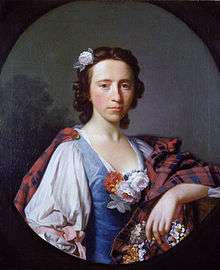
After the Jacobite entry into Edinburgh and their victory at Prestonpans in September, Forbes and John Campbell, Earl of Loudoun based themselves in Inverness with around 2,000 recruits, senting regular updates to General George Wade in Newcastle.[16] They were forced to retreat to the Isle of Skye when the Jacobites retreated to Inverness after abandoning the siege of Stirling Castle in February 1746.

After the government victory at the Battle of Culloden in April, Forbes returned home to find his house looted and all his cattle stolen. While he supported severe penalties for the leaders, especially repeat offenders like Lord Murray and Lord Lovat, he also counselled that 'Unnecessary Severitys create Pity.'[17] He opposed the 1746 Dress Act banning Highland attire except when worn in military service, arguing it was unnecessary and enforcement of the 1716 Disarming Act was more important. This advice was largely ignored by the Duke of Cumberland, who wrote ...as yet, we remain vastly fond of one another..., (but) he is Highland mad...and believes once dispersed, the rebels are no more consequence than a London mob.[18] However, by 1747, public sympathies had moved against Cumberland's intransigence; Forbes arranged for Flora MacDonald, arrested and held in the Tower of London for helping Prince Charles to escape, to be held outside the Tower.[19] She and other Jacobite prisoners were released after the June 1747 Act of Indemnity.
He was financially ruined by the Rising; not only by the damage done to his estate but because he was never reimbursed for the monies he spent on behalf of the government.[20] He died on 10 December 1747 and was buried in Greyfriars Kirkyard, near to his brother John. The grave lies south of the church and is marked by a stone slab added in the 1930s by the Saltire Society. A statue of him by Louis-François Roubiliac was erected in the Parliament House, Edinburgh by the Faculty of Advocates in 1752.
Legacy
His son John married his cousin Jean Forbes in 1749 and restored the family fortunes in the 1760s by enlarging an existing whiskey distillery at Ferintosh and building three more.[21]
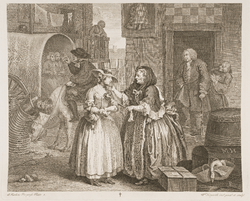
Forbes wrote a number of theological works, including A Letter to a Bishop, concerning some important Discoveries in Religion and Theology, Some Thoughts concerning Religion, natural and revealed … tending to show that Christianity is, indeed, very near as old as the Creation, and Reflections on the Sources of Incredulity with respect to Religion. He campaigned against the 'excessive use of tea,' claiming that it threatened the commercial prosperity of the country and wanted to limit its use to those with an income under £50 a year.
A keen golfer, he was a founder of the Gentlemen Golfers of Leith and despite his strict Presbyterianism, a friend and tenant of Francis Charteris. Charteris was a notorious sexual predator and gambler, who allegedly appears in William Hogarth's paintings, A Rake's Progress and A Harlot's Progress (see Plate). Accused of rape for the third time in 1730, he was sentenced to death; the Earl of Egmont wrote in his diary that All the world agree he deserved to be hanged long ago, but they differ whether on this occasion, while Fog's Weekly Journal of 14 March 1730 reported that We hear no Rapes have been committed for three Weeks past. Colonel Francis Charteris is still in Newgate. Forbes is said to have been instrumental in helping him obtain a pardon and Charteris left him £1000 when he died in 1732.[22]
Footnotes
- ↑ This was a wider issue than it may appear; lack of clean drinking water, particularly in cities, meant it was often replaced by low-alcohol or small beer, since the fermentation process made it safer.
- ↑ The Riots form the centrepiece of Walters Scott's 1818 novel The Heart of Midlothian.
- ↑ Lord Lovat was the last of the old-style Highland leaders and once referred to the Forbes as ‘the upstart offspring of a servant of Strehines and a burgher of Inverness, that no man in his senses can call a family, no more than a mushroom of one night’s growth can be called an old oak tree of five hundred years’ standing.'
References
- ↑ "Addressing a Judge". The Scottish Courts & Tribunal Service. Retrieved 16 July 2018.
- ↑ PJ, Anderson. "Studies in the History of the University of Aberdeen" (PDF). Electric Scotland. Retrieved June 10, 2018.
- ↑ Baston, Karen (2016). Charles Areskine's Library: Lawyers and Their Books at the Dawn of the Scottish Enlightenment. Brill. p. 64. ISBN 9004315373.
- ↑ Forbes, John. "The History of Parliament: the House of Commons 1715-1754, e". Parliament Online. Retrieved 11 July 2018.
- ↑ Forbes, Viscount, George. "The History of Parliament: the House of Commons 1715-1754,". Parliament Online. Retrieved 11 July 2018.
- ↑ Duff, HR (1815). Culloden papers: comprising an extensive and interesting correspondence from the year 1625 to 1748; (2017 ed.). Andesite Press. pp. 64–65. ISBN 137568079X.
- ↑ Forbes, Duncan. "The House of Commons 1715-1754". History of Parliament Online. Retrieved 13 July 2018.
- ↑ Campbell, Daniel. "The House of Commons 1715-1754". History of Parliament Online. Retrieved 13 July 2018.
- ↑ Szechi, Daniel, Sankey, Margaret (November 2001). "Elite Culture and the Decline of Scottish Jacobitism 1716-1745". Past & Present. 173: 108. JSTOR 3600841.
- ↑ Szechi, Daniel, Sankey, Margaret (November 2001). "Elite Culture and the Decline of Scottish Jacobitism 1716-1745". Past & Present. 173: 110–111. JSTOR 3600841.
- ↑ Blaikie, Walter Biggar (1916). Origins of the Forty-Five, and Other Papers Relating to That Rising. Forgotten Books. p. 57. ISBN 1331341620. Retrieved 11 July 2018.
- ↑ Groves Lt-Colonel, Percy (1893). History Of The 42nd Royal Highlanders: The Black Watch, Now The First Battalion The Black Watch (Royal Highlanders) 1729-1893 (2017 ed.). Edinburgh: W. & A. K. Johnston. pp. 3–4. ISBN 1376269481.
- ↑ Duffy, Christopher (2003). The '45: Bonnie Prince Charlie and the untold story of the Jacobite Rising (First ed.). Orion. p. 43. ISBN 0304355259.
- ↑ Riding, Jacqueline (2016). Jacobites; A New History of the 45 Rebellion. Bloomsbury. pp. 93–94. ISBN 1408819120.
- ↑ Riding, Jacqueline (2016). Jacobites; A New History of the 45 Rebellion. Bloomsbury. pp. 95–97. ISBN 1408819120.
- ↑ "Letter from Lord Loudon and Duncan Forbes [of Culloden] (Lord President) to Field Marshall Wade 13 November 1745". Cumbria Archive and Local Studies Centre. Retrieved 13 July 2018.
- ↑ Duff, HR (1815). Culloden Papers: Comprising An Extensive And Interesting Correspondence From 1625 To 1748 (2017 ed.). Andesite Press. pp. 284–285. ISBN 1376334135.
- ↑ Riding, Jacqueline (2016). Jacobites; A New History of the 45 Rebellion. Bloomsbury. p. 460. ISBN 1408819120.
- ↑ Riding, Jacqueline (2016). Jacobites; A New History of the 45 Rebellion. Bloomsbury. p. 496. ISBN 1408819120.
- ↑ Riding, Jacqueline (2016). Jacobites; A New History of the 45 Rebellion. Bloomsbury. pp. 497–498. ISBN 1408819120.
- ↑ "An 18th century distillery at Mulchaich Farm, Ferintosh on the Black Isle, Ross-shire". North of Scotland Archaeological Society. Retrieved 14 July 2018.
- ↑ Charteris, Francis. "Dictionary of National Biography". Retrieved 14 July 2018.
Sources
- Anderson, PJ; Studies in the History of the University of Aberdeen; (Electric Scotland);
- Baston, Karen; Charles Areskine's Library: Lawyers and Their Books at the Dawn of the Scottish Enlightenment; (Brill, 2016);
- Blaikie, Walter Biggar; Origins of the Forty-Five, and Other Papers Relating to That Rising; (Forgotten Books 1916);
- Duff, HR; Culloden papers: comprising an extensive and interesting correspondence from the year 1625 to 1748; (Andesite Press, 1815 (2017 ed);)
- Duffy, Christopher; The '45: Bonnie Prince Charlie and the untold story of the Jacobite Rising (Orion, 2003);
- Groves Lt-Colonel, Percy; History Of The 42nd Royal Highlanders: The Black Watch, Now The First Battalion The Black Watch (Royal Highlanders) 1729-1893; (W. & A. K. Johnston, 1893);
- Oxford Dictionary of National Biography - Online
- Riding, Jacqueline; Jacobites; A New History of the 45 Rebellion; (Bloomsbury, 2016);
- Szechi, Daniel, Sankey, Margaret Elite Culture and the Decline of Scottish Jacobitism 1716-1745; (Past & Present, 2001);
External links

- Works by or about Duncan Forbes, Lord Culloden in libraries (WorldCat catalog)
- A Letter from a Fyfe Gentleman, at present in Edinburgh, to the Chief Magistrate of a Burgh in Fyfe, Upon the present Situation, with regard to the Malt-Tax, By the Author of a former Letter from Fyfe upon the same Subject, dated 31 December 1724. Millar’s uncertainty over whether the material he sent constituted a “pamphlet” might imply that A Letter was meant to be supplemented by further pamphlets by the same author.[1]
| Parliament of Great Britain | ||
|---|---|---|
| Preceded by Thomas Kennedy |
Member of Parliament for Ayr Burghs 1721 – 1722 |
Succeeded by William Steuart |
| Preceded by Alexander Gordon |
Member of Parliament for Inverness Burghs 1722 – 1737 |
Succeeded by Duncan Urquhart |
| Legal offices | ||
| Preceded by Robert Dundas |
Lord Advocate 1725–1737 |
Succeeded by Charles Erskine |
| Preceded by Hew Dalrymple, Lord North Berwick |
Lord President 1737–1748 |
Succeeded by Robert Dundas |
- ↑ "Letter from Andrew Millar to Robert Wodrow, 5 August, 1725". www.millar-project.ed.ac.uk.